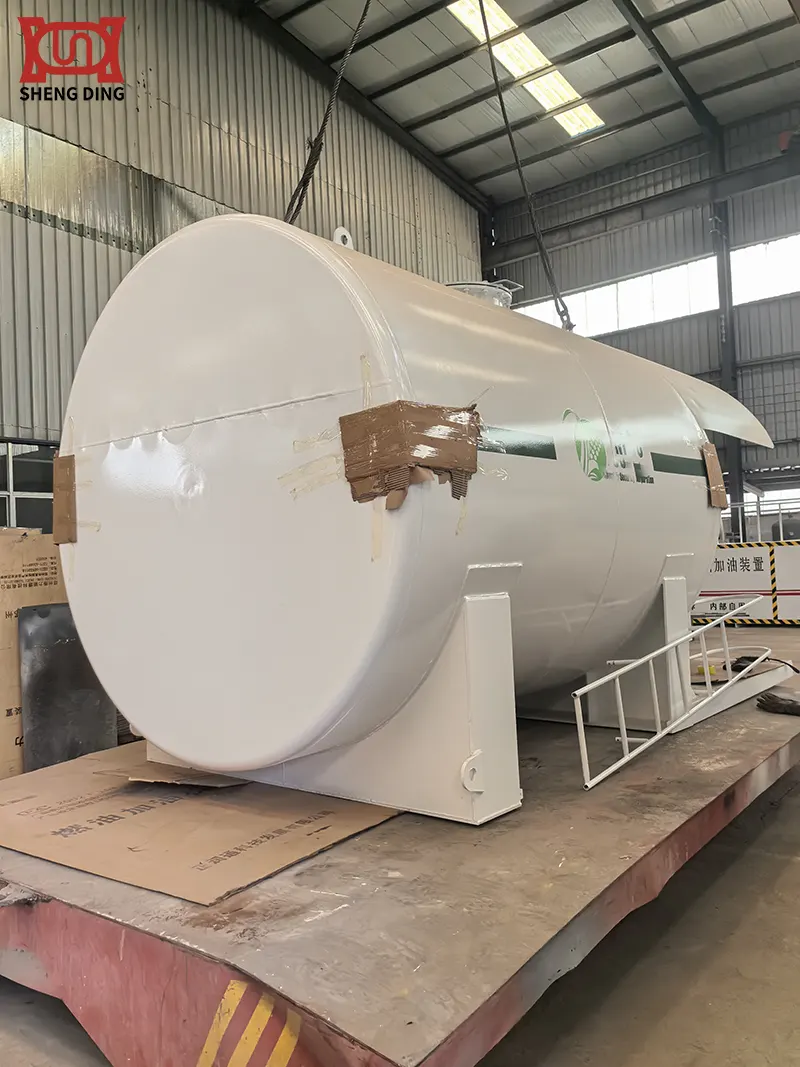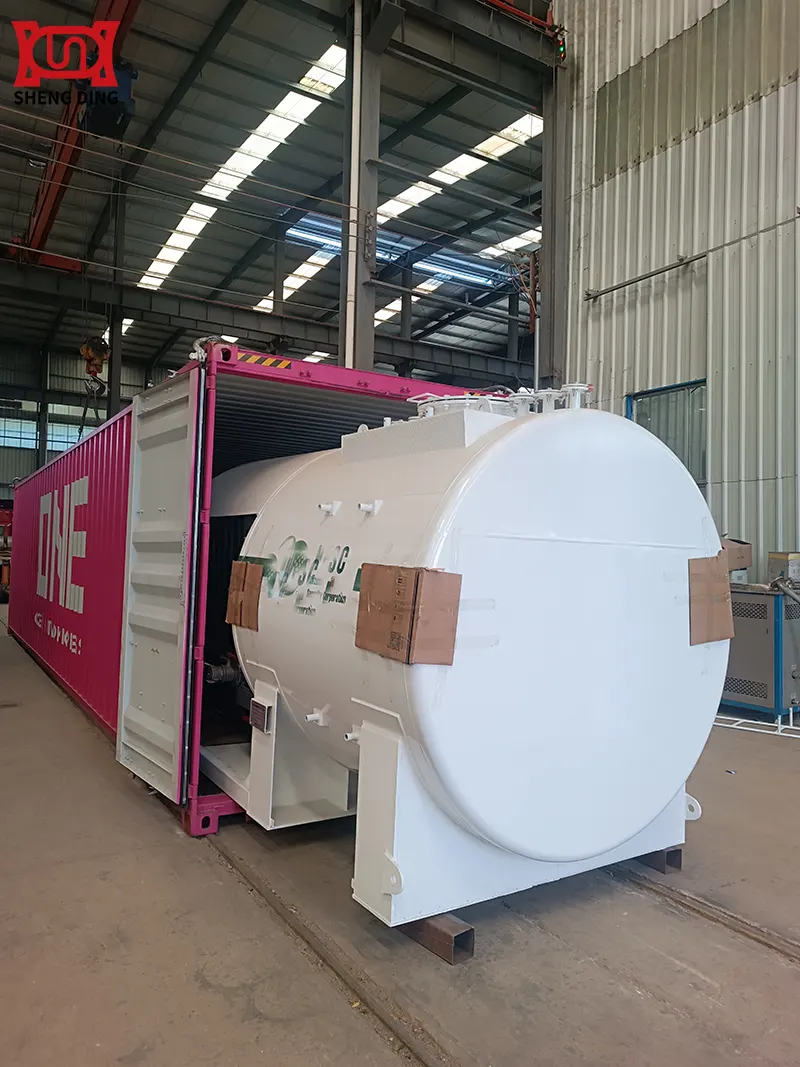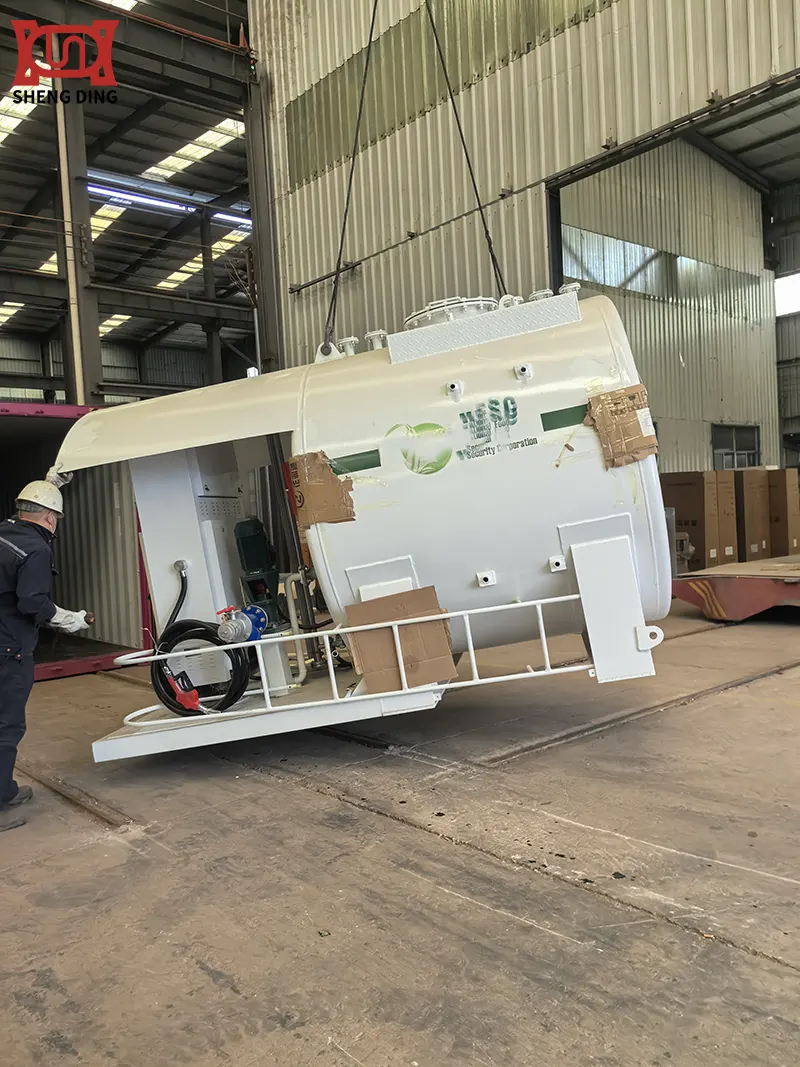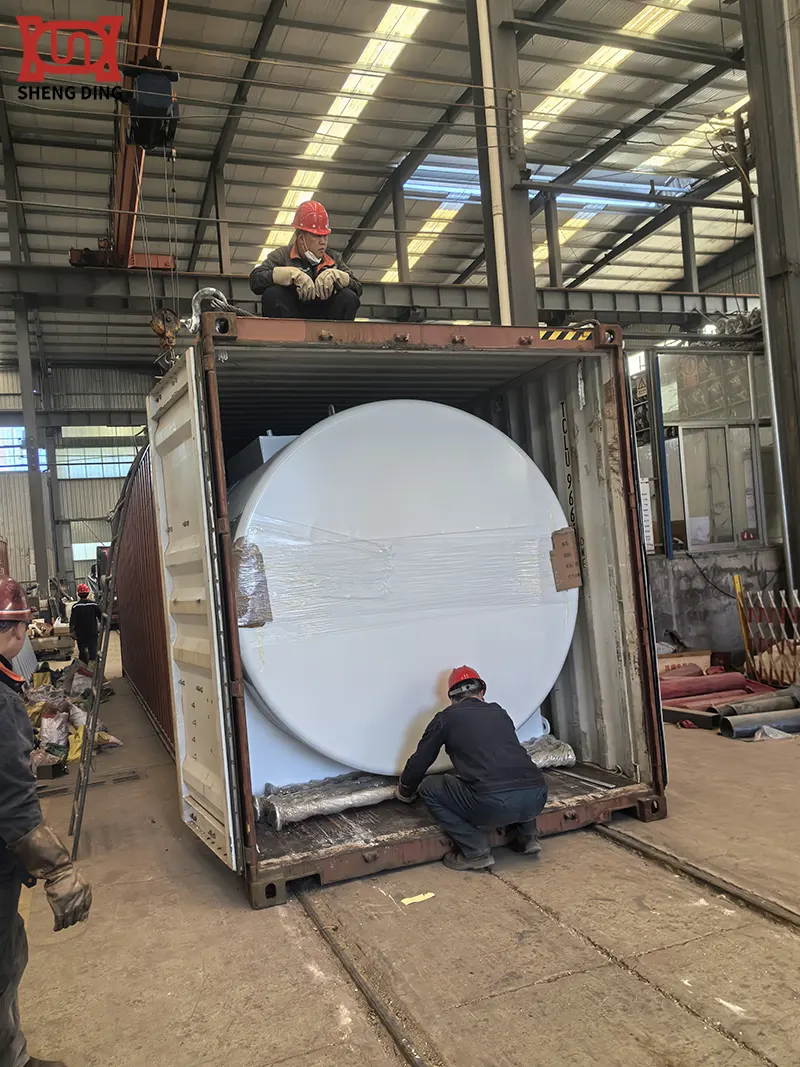Shengding
Call Us +86 538-8881799
The most common faults and problems with self-bunded fuel tanks
Release Date: August 19, 2025
Here are the most common faults and issues associated with self-bunded fuel tanks (also known as double-walled tanks or integral bunded tanks):
1.Corrosion:
- Base Corrosion: The most prevalent and serious fault. Water inevitably accumulates in the bund sump over time (from condensation, rainwater ingress, spillage). If not regularly drained, this water sits against the base of the inner tank, leading to severe localized corrosion and eventual leaks.
- General External Corrosion: Exposure to harsh environments (coastal salt, industrial chemicals, fertilizers) can corrode the outer bund wall and structural supports.
- Galvanic Corrosion: Occurs where dissimilar metals contact (e.g., steel tank on aluminum supports, brass fittings on steel).


2.Structural Damage & Deformation:
- Bulging/Distortion: Overfilling the inner tank beyond its capacity can cause the walls to bulge or deform, potentially compromising integrity.
- Impact Damage: Collisions from vehicles (forklifts, trucks) or falling objects can dent, crack, or puncture either the inner tank or outer bund.
- Ground Settlement/Shifting: Improper site preparation or unstable ground can cause the tank to settle unevenly, stressing welds and seams, potentially leading to cracks or leaks.
- Stress Cracking: Fatigue over time, particularly at weld points or mounting points, can develop into cracks.
3.Leak Detection System Failure:
- Sensor Malfunction: Electronic interstitial (annulus) monitors can fail due to water ingress, wiring damage, component failure, or battery depletion, giving false alarms or (worse) failing to detect a real leak.
- Visual Inspection Difficulty: For tanks relying solely on visual dipsticks or sight glasses in the bund sump, blockages, dirt, or lack of regular checks mean leaks go unnoticed until a major spill occurs or the bund overflows.
4.Gasket, Seal & Fitting Failures:
- Deterioration: Gaskets on manways, fill points, and access covers degrade over time due to weathering, UV exposure, temperature cycles, and fuel contact, leading to leaks.
- Fitting Leaks: Connections to pipes, valves, gauges, or dispensers can develop leaks due to vibration, improper installation, or seal failure.
- Bund Sump Drain Valve Leaks: The valve designed to drain water from the sump can leak if the seal fails or it's left partially open.
5.Vent System Issues:
- Blockages: Insect nests, dirt, ice, or debris can block tank vents, causing vacuum during drawdown (potentially collapsing the tank) or over-pressure during filling/spillage.
- Incorrect Venting: Undersized vents or vents not positioned correctly can lead to breathing problems.,/
6.Faulty or Damaged Accessories:
- Fill Point Caps: Damaged, missing, or poorly sealed caps allow water and contaminants into the tank.
- Locking Mechanisms: Broken or insecure locks provide inadequate security against theft or vandalism.
- Pumps & Meters: Mechanical failures in dispensing equipment attached to the tank.
7.Poor Installation & Commissioning:
- Inadequate Foundation: Lack of a stable, level, load-bearing base (concrete pad, compacted hardcore) leads to settlement and stress.
- Incorrect Leveling: Tank not level can cause uneven stress, inaccurate level gauging, and improper drainage to the sump.
- Lack of Protection: Insufficient protection from vehicle impact or falling objects.
- Improper Earthing: Increases risk of static discharge during filling.


8.Operator Error & Neglect:
- Overfilling: The single biggest cause of spills. Failing to monitor the fill level adequately.
- Failure to Drain Bund Sump: Allowing water to accumulate and cause corrosion or overflow the bund capacity.
- Ignoring Inspections/Maintenance: Not performing routine visual checks, failing to test leak detection systems, ignoring minor leaks or damage until they become major.
- Spillage During Delivery/Refueling: Poor practices leading to fuel entering the bund unnecessarily.
Key Mitigation Strategies:
- Regular Inspections: Visually check the tank, bund sump (drain water!), fittings, vents, and foundations frequently (weekly/monthly).
- Proactive Maintenance: Schedule professional inspections and servicing annually. Test leak detection systems regularly. Replace gaskets/seals preventatively.
- Strict Operational Procedures: Implement and enforce safe filling procedures (never overfill!), bund sump draining routines, and spill response plans.
- Correct Installation: Ensure a proper foundation, leveling, impact protection, and earthing by qualified installers following manufacturer and regulatory guidelines (e.g., STI, OFTEC standards).
- Corrosion Protection: Consider tanks with enhanced base protection (thicker steel, sacrificial anodes, epoxy coatings). Ensure sump drainage is functional.
- Training: Train all personnel involved in delivery, dispensing, and maintenance on safe procedures and fault recognition.
- Quality Equipment: Choose tanks and leak detection systems from reputable manufacturers meeting relevant standards.
By understanding these common faults and implementing robust preventative maintenance and operational controls, the risks associated with self-bunded fuel tanks can be significantly minimized, ensuring environmental protection, safety, and long-term reliability.
Written by
TAIAN SHENGDING METAL CONTAINER MANUFACTURING CO., LTD.
Editor Wang
www.self-bunded-tank.com
WhatsApp:+86 152 5486 3111
Email:shengdingtank@126.com
Shengding Metal Container Manufacturing
Taian Shengding Metal Container Manufacturing Co., Ltd. All Right Reserved
- WhatsApp
- E-MailE-Mail:shengdingtank@126.com
- WeChatWeChat:15254863111









